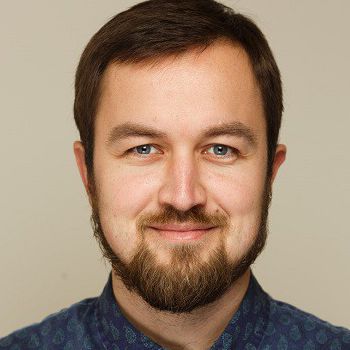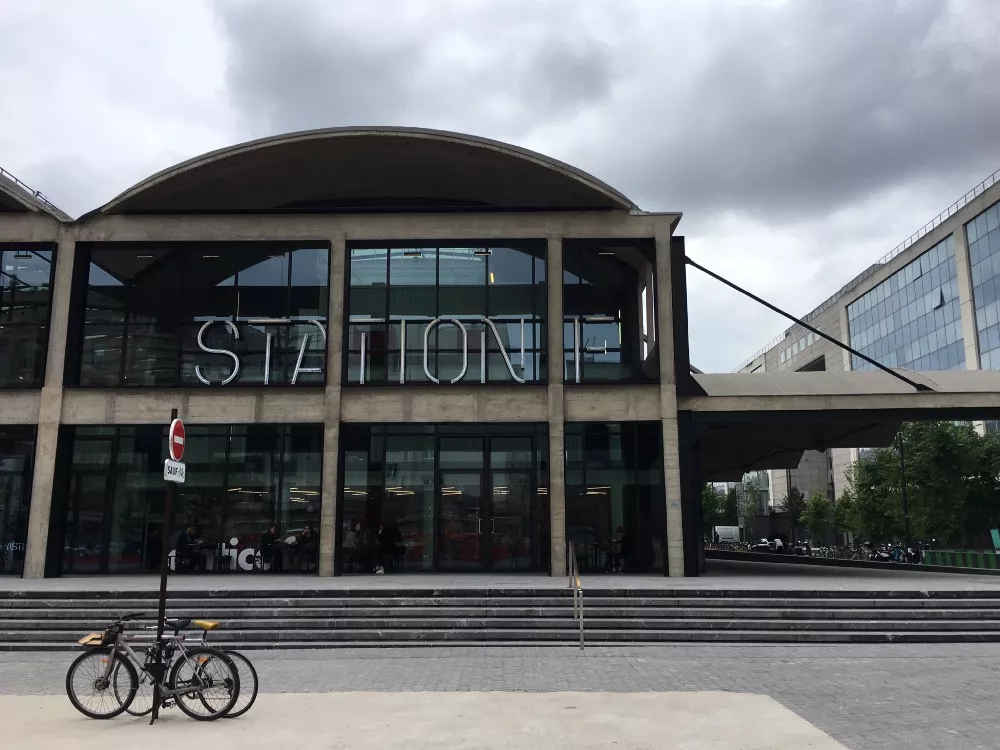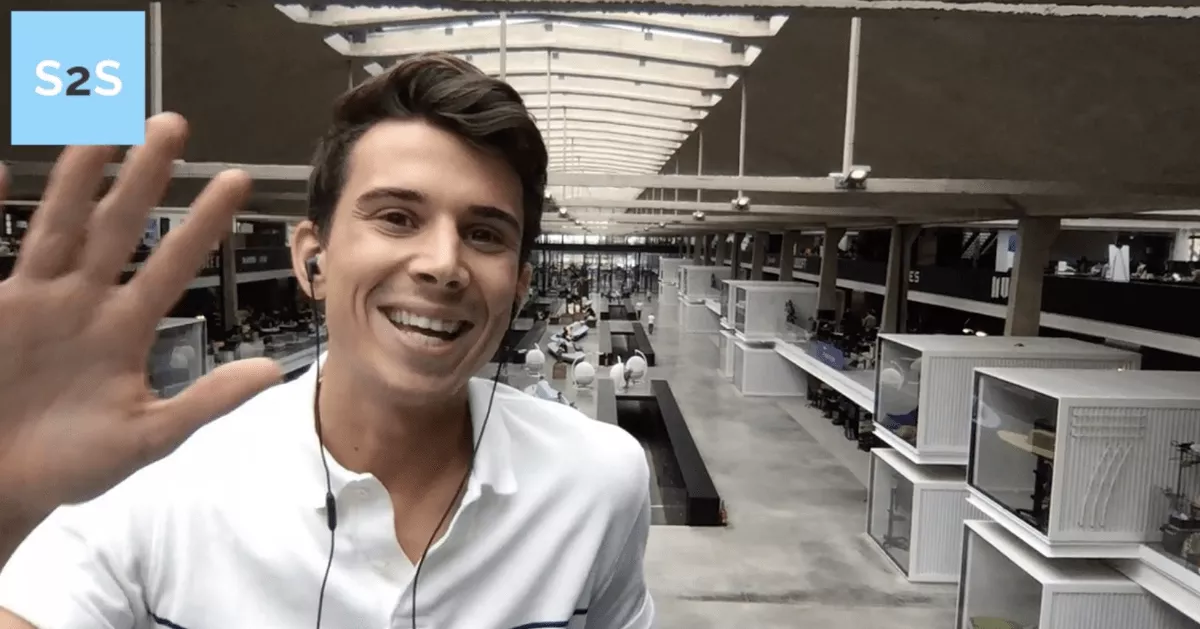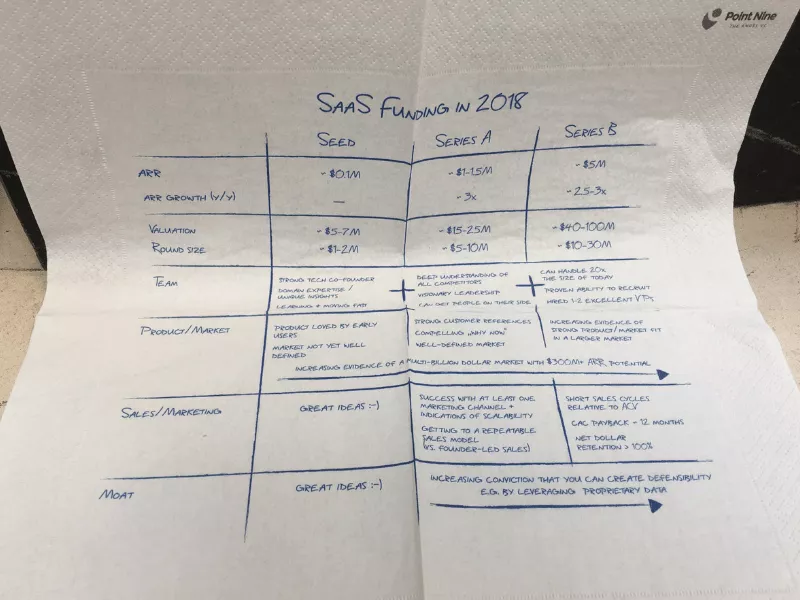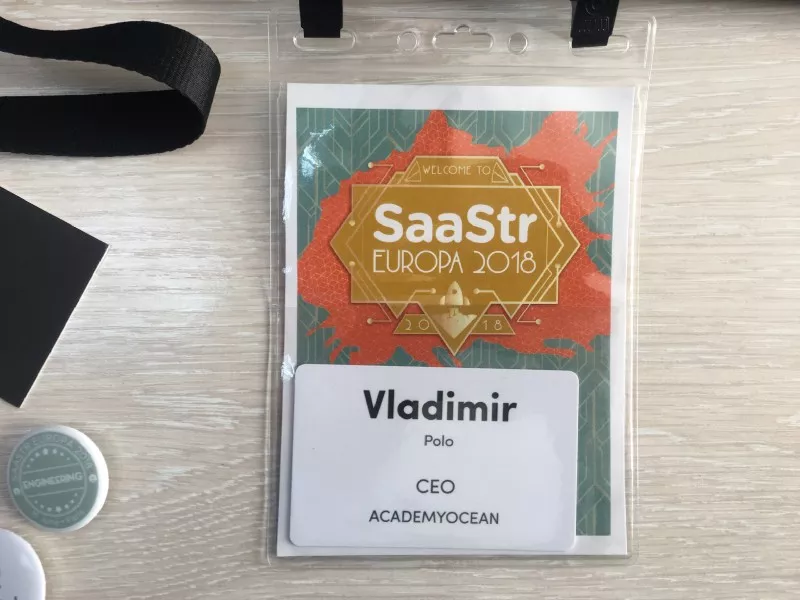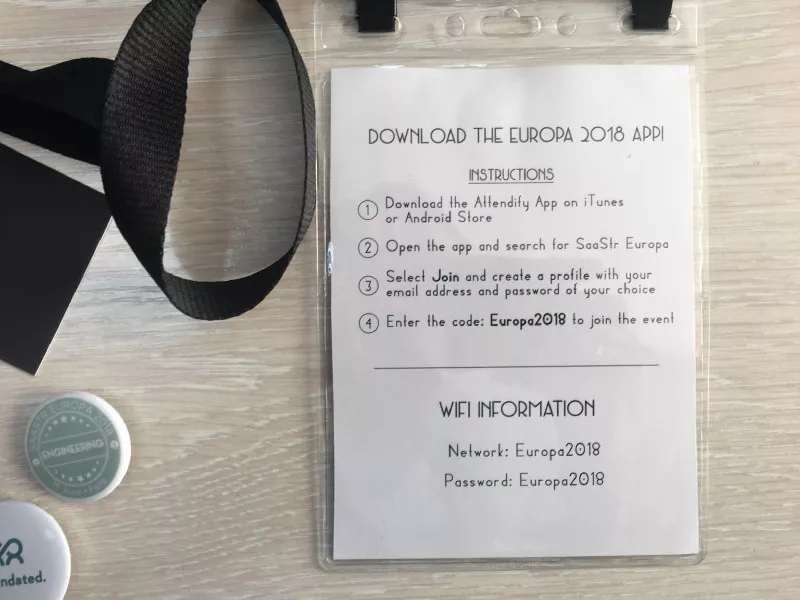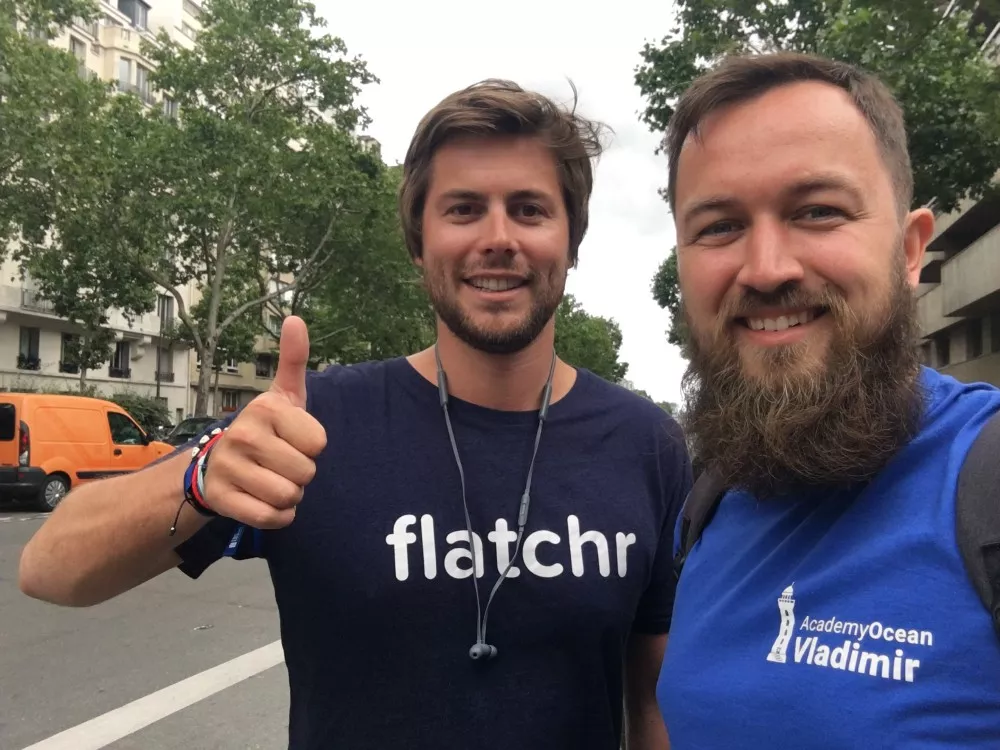The SaaS market is growing by 20% every year, making it no surprise that there are so many industry conferences. The biggest SaaS conference is SaaStr Annual, which is held in California and draws 12,000–15,000 people.
Having a booth at SaaStr is an important milestone for a startup. But getting there is no easy feat — basic tickets to the conference start at $1,100, and sponsor/partner packages range from $10k to $250k.
Luckily, there was a new, interesting option this year for those of us not yet ready to spend that much money: SaaStr Europa. This was a new conference in Paris organized by SaaStr. Here is my review of the conference (read original blog post). Enjoy!
In April 2018, I read a Facebook post by Alexey Orap (the founder of YouScan) about the first European SaaStr Conference. YouScan was planning on participating as a partner. Reading this post, I suddenly realized that AcademyOcean absolutely needed to attend this conference, too. For starters, SaaS companies are AcademyOcean’s main clients. Then there’s the fact that SaaStr is the biggest SaaS community in the world. What was even more enticing about this conference was the fact that it was located in Europe, where we’re located too.
Tickets to the conference were around $300, and there will likely be promo codes for SaaStr newsletter subscribers next year.
So I bought a ticket and booked a room in Paris one month before the conference. My vision for this experience was clear: I wanted to meet local SaaS founders, not just go to the conference. I wanted to get to know the SaaS community in Paris and learn about their challenges and growing pains.
With my vision in mind, I emailed a couple dozen Parisian SaaS founders a few weeks ahead of the conference. I received responses from many of them and was pleased to find that they were open and receptive to sharing advice. Their feedback led me to some of the most interesting startup locations in Paris.
With their help, I was able to get into Station F.
Station F is the biggest startup campus in the world (according to Wired). More than 1,000 startups have called this huge building home. You can only get into the Station by invitation, if a local startup shares a single-use QR code with you.
This is what the inside of the campus looks like. The Master Stage, a conference hall that seats 350 people, is located below the main hall.
The containers you can see on the left and the right are actually meeting rooms. Most of the startups sit in a huge open space not in this picture.
There are plenty of places for people to talk with coworkers or hold video calls. The building’s large ceiling windows give the space great lighting.
The next time you see this view, maybe in a video call, you’ll know that the company you’re talking to is based in Station F, just like Guillaume from Lemlist.
There are several art installations on the Campus grounds. One of them looks like huge wads of clay.
The Family is another very important startup spot in Paris. Everyone I talked to recommended I go there, and I’m glad I did. The space has an old-fashioned style, but it’s cozy and has a lot of warm light.
The first part of the conference was held here (the day before the main event). There were about 200 participants on two floors and in a big hall. There were snacks and drinks, and of course there was a ton of networking. The event organizers gave a short speech, which was followed by several hours for making new connections and having conversations with super interesting people.
This is what the first floor of The Family looked like that evening.
By the way, participants were able to get their badges ahead of time, one day before the conference, in the hotel lobby. This helped decrease lines at registration in the morning.
SaaStr Europa is the earliest conference I have ever attended. It opened at 7:30 AM, and the conference was slated to begin at 8:00 AM. This is way too early, if you ask me.
Luckily, Salesforce had a nice breakfast prepared for all of us early birds.
The conference was held in one of the oldest hotels of Paris (Inter Continental Grand Hotel). It was a pretty impressive conference hall, especially compared to the newer, more modern spaces US visitors may be used to.
There was one more hall, which I found several hours later. I spent most of my time in the networking section.
There were around 1,500 participants at the conference, and most of them were founders or employees of SaaS companies. I was happy to see that some of them were from Ukraine, such as Youscan, Promorepublic, Competera, and AcademyOcean.
During one of the coffee breaks, Alex Sazonov from Competera came up to me and said: «Hey, have you seen this? Let me show you something!» He led me to a table with a stack of napkins. These were no ordinary napkins; they were SaaS napkins made by Point Nine Capital!
Sponsors could set up booths in the exhibition section. There were not too many of them — about 20 in total. But they all presented themselves well. There was also a lot of traditional branded staff for people to take. The most unusual thing I found was small metal shutter for laptop cameras, which Cumul.io brought for guests.
Since I spent most of my time at the conference networking, I wasn’t able to listen to that many speakers. In fact, I only made it to one speech, which was given by Aaron Ross. He and Jason Lemkin are co-authors of my favorite book about SaaS, which is called From Impossible to Inevitable.
I strongly recommend that anyone who is building a SaaS company, or aspires to do so, read this book.
I was very happy to be able to meet Aaron and discuss customer education with him, especially because his company, Predictable Revenue, has an Academy : )
Something at this conference that I’d never encountered before was Braindating (provided by e180).
This is a new format for networking that consists of the following components:
- An app where you can propose a topic for 1x1 or group meetings. If you are willing to share your knowledge on some topic, it’s easy to create a meeting with a title such as «How to increase conversion rates from trial accounts to paying accounts by 35% using education».
- A scheduling system. When somebody is interested in a topic that you have proposed, they can choose a time slot from your conference calendar that suits them best (this is pretty similar to what Calendly does, which is one of my favourite tools).
- A dedicated networking zone. Only «braindaters» had access to the Braindating zone. The space was equipped with tables and chairs (whereas regular networking zones usually don’t have chairs).
- A Braindate administrator. At the meeting point near the Braindating zone, there was a person in charge of helping out with the meetings. This person made a big difference, especially for those of us who hadn’t participated in braindates before (such as me).
This gave people the opportunity to hold several super productive 15–30 min meetings. Everyone who organized at least one Braindate got a special badge that said «I Braindated».
This is what the SaaStr Europa participant badges looked like. Many people I spoke to said they thought it was a cool design.
The official part of the conference ended at 7:00 PM, and the hall emptied out within a few minutes. Undoubtedly many participants broke out into groups and went to nearby bars and restaurants to continue the conference.
In total, about 17 hours passed from the very beginning of the conference to the point when our group said goodbye.
If you’re planning on getting the most out of a conference like SaaStr, be prepared to spend a lot of time at it. You’ll have a great time, like I did.
Thanks, Sampath and Thomas, for inviting me into your group!
By the way, it was a great idea to stay in the city for a few days after the conference, using the extra time for follow-up meetings.
Let me introduce you to Valentin Konrad, who is building Flatchr, a very nice product for French recruiters. It was great to meet his team, see their office, and visit the part of the city where they are located.
You’ll also be able to do some sightseeing and take a little vacation. Paris is a great spot for this. If you get up early enough, you can beat the crowds at the Louvre.
Here is a summary of my takeaways from SaaStr Europa
What I loved most:
- The SaaS community was great.
- The conference was organized perfectly.
- The location was unique (although it could be somewhere else next year).
- It was much cheaper than US conferences.
- It was much easier for European startups to get to.
What could be improved:
- Too little communication with attendees online, especially after the conference ended. It would be great to get some photos/videos/stats from the conference.
- There are no recordings of speeches. Maybe they’ll be sent out later, but two months have passed since the conference and nothing has shown up on YouTube or anywhere else.
- I found the Braindating schedule system difficult to figure out, and other participants expressed the same sentiment. This could have been fixed easily by having people on hand to help, with signs that read, «Want to go on a braindate? Ask me how».
Overall, SaaStr organized a perfect event. If you are building a SaaS company, I definitely recommend that you get a ticket as soon as they go on sale!
Related Articles
Display Advertising Effectiveness Analysis: A Comprehensive Approach to Measuring Its Impact
In this article, I will explain why you shouldn’t underestimate display advertising and how to analyze its impact using Google Analytics 4
Generative Engine Optimization: What Businesses Get From Ranking in SearchGPT
Companies that master SearchGPT SEO and generative engine optimization will capture high-intent traffic from users seeking direct, authoritative answers
From Generic to Iconic: 100 Statistics on Amazon Marketing for Fashion Brands
While traditional fashion retailers were still figuring out e-commerce, one company quietly revolutionized how U.S. consumers shop for everything from workout gear to wedding dresses
